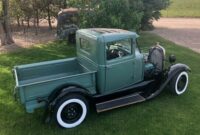Hi Rail Trucks For Sale: Your Comprehensive Guide to Acquiring Dual-Mode Efficiency pickup.truckstrend.com
Introduction: Bridging Road and Rail with Hi-Rail Trucks
In the dynamic world of railway infrastructure, efficiency, safety, and versatility are paramount. Traditional methods of accessing and maintaining rail lines often involve complex logistics, extensive downtime, and significant costs. This is where the ingenious Hi-Rail truck, also known as a road-rail vehicle, emerges as an indispensable asset. These remarkable machines possess the unique ability to operate seamlessly on both conventional roads and railway tracks, transforming a standard commercial truck into a dual-mode workhorse.
Hi Rail Trucks For Sale: Your Comprehensive Guide to Acquiring Dual-Mode Efficiency
For businesses, contractors, and government agencies involved in railway construction, maintenance, inspection, and emergency response, the acquisition of a Hi-Rail truck is not merely a purchase; it’s an investment in unparalleled operational flexibility and productivity. The market for Hi-Rail trucks for sale is robust, offering a diverse range of new and used options to meet varying budgetary and operational demands. This comprehensive guide will delve into every facet of Hi-Rail trucks, from their fundamental design to critical purchasing considerations, ensuring you are well-equipped to make an informed decision.
Understanding Hi-Rail Trucks: More Than Just a Truck
At its core, a Hi-Rail truck is a standard commercial vehicle—ranging from pickup trucks to heavy-duty utility trucks—that has been specially outfitted with retractable rail gear. This specialized equipment, typically hydraulic, allows the truck to quickly deploy and retract a set of flanged steel wheels, enabling it to transition from road travel to rail travel with remarkable ease.
The primary function of this dual-mode capability is to provide efficient access to rail lines for a multitude of tasks. Instead of requiring separate road vehicles to transport personnel and equipment to a rail crossing, then transferring to rail-specific machinery, a Hi-Rail truck can drive directly to the worksite, deploy its rail gear, and continue along the tracks. This significantly reduces setup time, enhances operational fluidity, and improves overall safety by minimizing transfers and exposure. Key components include robust rail gear systems, insulated wheels for signal integrity, advanced braking systems, and often specialized lighting and warning devices for rail environments.
Why Invest in a Hi-Rail Truck? Key Benefits
The advantages of integrating Hi-Rail trucks into your fleet are numerous and impactful:
- Unmatched Versatility: The ability to transition effortlessly between road and rail networks is the hallmark benefit. This means less reliance on specific access points, allowing crews to reach remote or difficult-to-access sections of track directly.
- Enhanced Efficiency and Productivity: By eliminating the need for separate road and rail equipment, Hi-Rail trucks streamline operations, reduce travel time, and allow crews to spend more time on task. Faster deployment translates directly to increased productivity and project completion rates.
- Improved Safety: Modern Hi-Rail trucks are equipped with advanced safety features specifically designed for rail environments, including robust braking systems, fail-safe mechanisms for the rail gear, and comprehensive lighting/warning systems. Reduced transfers of personnel and equipment also mitigate potential accident risks.
- Cost-Effectiveness: While the initial investment can be significant, the long-term cost savings are substantial. Reduced logistics costs, optimized crew time, and the avoidance of needing separate fleets for road and rail operations contribute to a strong return on investment, especially for well-maintained used models.
- Flexible Application: From routine inspections to heavy-duty construction, Hi-Rail trucks can be configured for a wide array of applications, making them a highly adaptable asset for any railway-focused operation.

Types and Configurations of Hi-Rail Trucks
Hi-Rail trucks are incredibly diverse, tailored to specific tasks and operational requirements. Understanding these categories is crucial when considering Hi-Rail trucks for sale:
- By Truck Size and Capacity:
- Light-Duty Hi-Rail Trucks (Pickup Conversions): Often based on Ford F-Series, Ram, or Chevrolet Silverado chassis. Ideal for inspections, small utility work, signal maintenance, and transporting small crews and tools.
- Medium-Duty Hi-Rail Trucks (Utility & Service Trucks): Built on chassis like Ford F-550/650, Freightliner M2, or International Durastar. These are workhorses for general maintenance, signal repair, overhead line work, and often carry air compressors, generators, and welding equipment.
- Heavy-Duty Hi-Rail Trucks (Crane, Boom, & Specialized Carriers): Utilizing larger chassis such as Freightliner 114SD, Kenworth T880, or Peterbilt 567. These are equipped with large cranes, digger derricks, or specialized attachments for heavy lifting, track construction, ballast work, and major infrastructure projects.

- By Application:
- Inspection Trucks: Equipped with comfortable cabs, communication systems, and sometimes specialized cameras for track monitoring.
- Maintenance & Repair Trucks: Fitted with tools, welding equipment, and power sources for track, signal, or overhead line repairs.
- Utility & Crane Trucks: Essential for handling materials, installing poles, or positioning heavy components.
- Emergency Response Vehicles: Designed for rapid deployment to derailments or other incidents, often carrying specialized recovery tools.
- Specialized Equipment Carriers: Chassis modified to carry specific rail-bound equipment like tampers, ballast regulators, or tie inserters, allowing them to travel on road and deploy on rail.
Common chassis manufacturers include Ford, Freightliner, International, Kenworth, and Peterbilt. Leading rail gear manufacturers providing the specialized conversion include Mitchell, Harsco Rail, Brandt, and V&H Inc.
Key Considerations When Buying Hi-Rail Trucks For Sale
Purchasing a Hi-Rail truck, whether new or used, requires careful consideration to ensure you acquire the right asset for your needs.
- Budget and Financing: New Hi-Rail trucks represent a substantial investment. Used models offer a more budget-friendly entry point but require more diligent inspection. Explore financing options, including traditional loans, leases, or specialized equipment financing.
- Intended Application and Specific Needs: Clearly define the primary tasks the truck will perform. This will dictate the required chassis size, payload capacity, auxiliary equipment (crane, welder, air compressor), and rail gear specifications. Over-specifying can lead to unnecessary costs, while under-specifying can lead to inefficiencies.
- Condition and Thorough Inspection (Crucial for Used Trucks):
- Rail Gear: Inspect for wear on wheels, alignment, hydraulic leaks, cylinder condition, and overall structural integrity. Test the deployment and retraction mechanism.
- Truck Chassis: Perform a comprehensive inspection of the engine, transmission, brakes, suspension, tires, and frame. Check for rust, especially in critical structural areas. Obtain a full service history.
- Auxiliary Equipment: If the truck has a crane, digger derrick, or other attachments, ensure they are fully functional, well-maintained, and have current load test certifications.
- Safety Systems: Verify that all rail-specific safety features, including E-stops, horns, lights, and braking systems, are operational and compliant.
- Maintenance Records: This is perhaps the most vital document for a used Hi-Rail truck. A well-documented maintenance history indicates responsible ownership and can predict future reliability.
- Compliance and Certifications: Hi-Rail trucks operate in a highly regulated environment. Ensure the vehicle meets all applicable Federal Railroad Administration (FRA) regulations (e.g., Part 213 for track safety, Part 214 for roadway workers), AAR (Association of American Railroads) standards, and any state or local requirements. Proper certification of the rail gear and regular inspections are mandatory.
- Resale Value and Brand Reputation: Consider the reputation of both the truck chassis manufacturer and the rail gear installer. Well-known brands often hold their value better and have broader parts and service networks.
- After-Sale Support and Parts Availability: Verify the availability of spare parts for both the truck and the rail gear. Inquire about service support from the seller or local dealers. Downtime due to lack of parts can be costly.
Where to Find Hi-Rail Trucks For Sale
The market for Hi-Rail trucks is specialized but accessible:
- Specialized Heavy Equipment Dealers: Many dealers focus specifically on railway equipment or heavy-duty trucks with Hi-Rail conversions. They often have inventory, expertise, and can facilitate financing.
- Online Marketplaces: Platforms like IronPlanet, Ritchie Bros. Auctioneers, MachineryTrader, and TruckPaper list a wide array of new and used Hi-Rail trucks from various sellers.
- Auctions: Public and private auctions, particularly those specializing in heavy equipment, can be a source for used Hi-Rail trucks.
- Manufacturer Websites: For new trucks, directly contact manufacturers or their authorized dealers.
- Direct from Railway Companies/Contractors: Companies upgrading their fleets might sell their used Hi-Rail trucks directly. Networking within the industry can uncover these opportunities.
The Purchasing Process: Tips for a Smooth Transaction
Once you’ve identified potential candidates, follow these steps for a successful purchase:
- Define Your Needs Clearly: Before you even start looking, know exactly what kind of tasks your Hi-Rail truck will perform, your budget, and any must-have features.
- Conduct a Thorough Pre-Purchase Inspection (PPI): For used vehicles, never skip this step. Engage a qualified, independent mechanic specializing in heavy equipment and Hi-Rail systems. This investment can save you from costly surprises down the road.
- Review All Documentation: Scrutinize the title, maintenance records, rail gear certification, and any inspection reports. Ensure all paperwork is complete and legitimate.
- Negotiate the Price: Don’t be afraid to negotiate, especially for used equipment. Factor in any anticipated repair or upgrade costs into your offer.
- Arrange Financing and Payment: Secure financing in advance if needed. Understand the payment terms and ensure all financial transactions are secure.
- Plan for Transportation: If purchasing remotely, arrange for specialized heavy equipment transport to get the truck to your location safely and legally.
Potential Challenges and Solutions
While Hi-Rail trucks offer immense benefits, be aware of potential challenges:
- High Initial Cost: Solution: Explore the robust used market, which offers significant savings. Also, investigate leasing or financing options to manage cash flow.
- Maintenance Complexity: Solution: Hi-Rail trucks require specialized maintenance. Partner with technicians experienced in both heavy trucks and hydraulic rail gear systems, and adhere strictly to preventative maintenance schedules.
- Regulatory Compliance: Solution: Stay informed about current FRA, AAR, and local regulations. Ensure any truck you purchase is fully compliant and that your operators are properly trained and certified.
Hi-Rail Trucks For Sale: Estimated Price Ranges
The price of a Hi-Rail truck varies significantly based on factors such as its condition (new vs. used), truck size, auxiliary equipment, mileage, age, and brand reputation. The following table provides estimated price ranges to give you a general idea:
| Type of Hi-Rail Truck | Condition | Typical Price Range ($) | Key Features/Notes |
| :——————– | :——– | :———————– | :———————————————————————————————————————————————————————————————————————————————————————————————————————————————————————————————————————————————————————————————————————————————————————————————————————————————————————————————————————————————————————————————————————————————————————————————————————————————————————————————————————————————————————————————————————————————————————————————————————————————————————————————————————————————————————————————————————————————————————————————————————————————————————————————————————————————————————————————————————————————————————————————————————————————————————————————————————————————————————————————————————————————————————————————————————————————————————————————————————————————————————————————————————————————————————————————————————————————————————————————————————————————————————————————————————————————————————————————————————————————————————————————————————————————————————————————————————————————————————————————————————————————————————————————————————————————————————————————————————————————————————————————————————————————————————————————————————————————————————————————————————————————————————————————————————————————————————————————————————————————————————————————————————————————————————————————————————————————————————————————————————————————————————————————————————————————————————————————————————————————————————————————————————————————————————————————————————————————————————————————————————————————————————————————————————————————————————————————————————————————————————————————————————————————————————————————————————————————————————————————————————————————————————————————————————————————————————————————————————————————————————————————————————————————————————————————————————————————————————————————————————————————————————————————————————————————————————————————————————————————————————————————————————————————————————————————————————————————————————————————————————————————————————————————————————————————————————————————————————————————————————————————————————————————————————————————————————————————————————————————————————————————————————————————————————————————————————————————————————————————————————————————————————————————————————————————————————————————————————————————————————————————————————————————————————————————————————————————————————————————————————————————————————————————————————————————————————————————————————————————————————————————————————————————————————————————————————————————————————————————————————————————————————————————————————————————————————————————————————————————————————————————————————————————————————————————————————————————————————————————————————————————————————————————————————————————————————————————————————————————————————————————————————————————————————————————————————————————————————————————————————————————————————————————————————————————————————————————————————————————————————————————————————————————————————————————————————————————————————————————————————————————————————————————————————————————————————————————————————————————————————————————————————————————————————————————————————————————————————————————————————————————————————————————————————————————————————————————————————————————————————————————————————————————————————————————————————————————————————————————————————————————————————————————————————————————————————————————————————————————————————————————————————————————————————————————————————————————————————————————————————————————————————————————————————————————————————————————————————————————————————————————————————————————————————————————————————————————————————————————————————————————————————————————————————————————————————————————————————————————————————————————————————————————————————————————————————————————————————————————————————————————————————————————————————————————————————————————————————————————————————————————————————————————————————————————————————————————————————————————————————————————————————————————————————————————————————————————————————————————————————————————————————————————————————————————————————————————————————————————————————————————————————————————————————————————————————————————————————————————————————————————————————————————————————————————————————————————————————————————————————————————————————————————————————————————————————————————————————————————————————————————————————————————————————————————————————————————————————————————————————————————————————————————————————————————————————————————————————————————————————————————————————————————————————————————————————————————————————————————————————————————————————————————————————————————————————————————————————————————————————————————————————————————————————————————————————————————————————————————————————————————————————————————————————————————————————————————————————————————————————————————————————————————————————————————————————————————————————————————————————————————————————————————————————————————————————————————————————————————————————————————————————————————————————————————————————————————————————————————————————————————————————————————————————————————————————————————————————————————————————————————————————————————————————————————————————————————————————————————————————————————————————————————————————————————————————————————————————————————————————————————————————————————————————————————————————————————————————————————————————————————————————————————————————————————————————————————————————————————————————————————————————————————————————————————————————————————————————————————————————————————————————————————————————————————————————————————————————————————————————————————————————————————————————————————————————————————————————————————————————————————————————————————————————————————————————————————————————————————————————————————————————————————————————————————————————————————————————————————————————————————————————————————————————————————————————————————————————————————————————————————————————————————————————————————————————————————————————————————————————————————————————————————————————————————————————————————————————————————————————————————————————————————————————————————————————————————————————————————————————————————————————————————————————————————————————————————————————————————————————————————————————————————————————————————————————————————————————————————————————————————————————————————————————————————————————————————————————————————————————————————————————————————————————————————————————————————————————————————————————————————————————————————————————————————————————————————————————————————————————————————————————————————————————————————————————————————————————————————————————————————————————————————————————————————————————————————————————————————————————————————————————————————————————————————————————————————————————————————————————————————————————————————————————————————————————————————————————————————————————————————————————————————————————————————————————————————————————————————————————————————————————————————————————————————————————————————————————————————————————————————————————————————————————————————————————————————————————————————————————————————————————————————————————————————————————————————————————————————————————————————————————————————————————————————————————————————————————————————————————————————————————————————————————————————————————————————————————————————————————————————————————————————————————————————————————————————————————————————————————————————————————————————————————————————————————————————————————————————————————————————————————————————————————————————————————————————————————————————————————————————————————————————————————————————————————————————————————————————————————————————————————————————————————————————————————————————————————————————————————————————————————————————————————————————————————————————————————————————————————————————————————————————————————————————————————————————————————————————————————————————————————————————————————————————————————————————————————————————————————————————————————————————————————————————————————————————————————————————————————————————————————————————————————————————————————————————————————————————————————————————————————————————————————————————————————————————————————————————————————————————————————————————————————————————————————————————————————————————————————————————————————————————————————————————————————————————————————————————————————————————————————————————————————————————————————————————————————————————————————————————————————————————————————————————————————————————————————————————————————————————————————————————————————————————————————————————————————————————————————————————————————————————————————————————————————————————————————————————————————————————————————————————————————————————————————————————————————————————————————————————————————————————————————————————————————————————————————————————————————————————————————————————————————————————————————————————————————————————————————————————————————————————————————————————————————————————————————————————————————————————————————————————————————————————————————————————————————————————————————————————————————————————————————————————————————————————————————————————————————————————————————————————————————————————————————————————————————————————————————————————————————————————————————————————————————————————————————————————————————————————————————————————————————————————————————————————————————————————————————————————————————————————————————————————————————————————————————————————————————————————————————————————————————————————————————————————————————————————————————————————————————————————————————————————————————————————————————————————————————————————————————————————————————————————————————————————————————————————————————————————————————————————————————————————————————————————————————————————————————————————————————————————————————————————————————————————————————————————————————————————————————————————————————————————————————————————————————————————————————————————————————————————————————————————————————————————————————————————————————————————————————————————————————————————————————————————————————————————————————————————————————————————————————————————————————————————————————————————————————————————————————————————————————————————————————————————————————————————————————————————————————————————————————————————————————————————————————————————————————————————————————————————————————————————————————————————————————————————————————————————————————————————————————————————————————————————————————————————————————————————————————————————————————————————————————————————————————————————————————————————————————————————————————————————————————————————————————————————————————————————————————————————————————————————————————————————————————————————————————————————————————————————————————————————————————————————————————————————————————————————————————————————————————————————————————————————————————————————————————————————————————————————————————————————————————————————————————————————————————————————————————————————————————————————————————————————————————————————————————————————————————————————————————————————————————————————————————————————————————————————————————————————————————————————————————————————————————————————————————————————————————————————————————————————————————————————————————————————————————————————————————————————————————————————————————————————————————————————————————————————————————————————————————————————————————————————————————————————————————————————————————————————————————————————————————————————————————————————————————————————————————————————————————————————————————————————————————————————————————————————————————————————————————————————————————————————————————————————————————————————————————————————————————————————————————————————————————————————————————————————————————————————————————————————————————————————————————————————————————————————————————————————————————————————————————————————————————————————————————————————————————————————————————————————————————————————————————————————————————————————————————————————————————————————————————————————————————————————————————————————————————————————————————————————————————————————————————————————————————————————————————————————————————————————————————————————————————————————————————————————————————————————————————————————————————————————————————————————————————————————————————————————————————————————————————————————————————————————————————————————————————————————————————————————————————————————————————————————————————————————————————————————————————————————————————————————————————————————————————————————————————————————————————————————————————————————————————————————————————————————————————————————————————————————————————————————————————————————————————————————————————————————————————————————————————————————————————————————————————————————————————————————————————————————————————————————————————————————————————————————————————————————————————————————————————————————————————————————————————————————————————————————————————————————————————————————————————————————————————————————————————————————————————————————————————————————————————————————————————————————————————————————————————————————————————————————————————————————————————————————————————————————————————————————————————————————————————————————————————————————————————————————————————————————————————————————————————————————————————————————————————————————————————————————————————————————————————————————————————————————————————————————————————————————————————————————————————————————————————————————————————————————————————————————————————————————————————————————————————————————————————————————————————————————————————————————————————————————————————————————————————————————————————————————————————————————————————————————————————————————————————————————————————————————————————————————————————————————————————————————————————————————————————————————————————————————————————————————————————————————————————————————————————————————————————————————————————————————————————————————————————————————————————————————————————————————————————————————————————————————————————————————————————————————————————————————————————————————————————————————————————————————————————————————————————————————————————————————————————————————————————————————————————————————————————————————————————————————————————————————————————————————————————————————————————————————————————————————————————————————————————————————————————————————————————————————————————————————————————————————————————————————————————————————————————————————————————————————————————————————————————————————————————————————————————————————————————————————————————————————————————————————————————————————————————————————————————————————————————————————————————————————————————————————————————————————————————————————————————————————————————————————————————————————————————————————————————————————————————————————————————————————————————————————————————————————————————————————————————————————————————————————————————————————————————————————————————————————————————————————————————————————————————————————————————————————————————————————————————————————————————————————————————————————————————————————————————————————————————————————————————————————————————————————————————————————————————————————————————————————————————————————————————————————————————————————————————————————————————————————————————————————————————————————————————————————————————————————————————————————————————————————————————————————————————————————————————————————————————————————————————————————————————————————————————————————————————————————————————————————————————————————————————————————————————————————————————————————————————————————————————————————————————————————————————————————————————————————————————————————————————————————————————————————————————————————————————————————————————————————————————————————————————————————————————————————————————————————————————————————————————————————————————————————————————————————————————————————————————————————————————————————————————————————————————————————————————————————————————————————————————————————————————————————————————————————————————————————————————————————————————————————————————————————————————————————————————————————————————————————————————————————————————————————————————————————————————————————————————————————————————————————————————————————————————————————————————————————————————————————————————————————————————————————————————————————————————————————————————————————————————————————————————————————————————————————————————————————————————————————————————————————————————————————————————————————————————————————————————————————————————————————————————————————————————————————————————————————————————————————————————————————————————————————————————————————————————————————————————————————————————————————————————————————————————————————————————————————————————————————————————————————————————————————————————————————————————————————————————————————————————————————————————————————————————————————————————————————————————————————————————————————————————————————————————————————————————————————————————————————————————————————————————————————————————————————————————————————————————————————————————————————————————————————————————————————————————————————————————————————————————————————————————————————————————————————————————————————————————————————————————————————————————————————————————————————————————————————————————————————————————————————————————————————————————————————————————————————————————————————————————————————————————————————————————————————————————————————————————————————————————————————————————————————————————————————————————————————————————————————————————————————————————————————————————————————————————————————————————————————————————————————————————————————————————————————————————————————————————————————————————————————————————————————————————————————————————————————————————————————————————————————————————————————————————————————————————————————————————————————————————————————————————————————————————————————————————————————————————————————————————————————————————————————————————————————————————————————————————————————————————————————————————————————————————————————————————————————————————————————————————————————————————————————————————————————————————————————————————————————————————————————————————————————————————————————————————————————————————————————————————————————————————————————————————————————————————————————————————————————————————————————————————————————————————————————————————————————————————————————————————————————————————————————————————————————————————————————————————————————————————————————————————————————————————————————————————————————————————————————————————————————————————————————————————————————————————————————————————————————————————————————————————————————————————————————————————————————————————————————————————————————————————————————————————————————————————————————————————————————————————————————————————————————————————————————————————————————————————————–The Power of Connection: Why Your Business Needs a Hi-Rail Truck
In today’s fast-paced infrastructure development and maintenance landscape, the ability to seamlessly transition between road and rail is not just an advantage—it’s a necessity. For businesses operating in railway construction, maintenance, inspection, or emergency response, the Hi-Rail truck stands as a pivotal asset, offering unparalleled versatility and efficiency. These specialized vehicles, also known as road-rail vehicles, are standard commercial trucks equipped with retractable rail gear that allows them to travel on both highways and railway tracks. This unique dual-mode capability makes them indispensable for anyone looking to optimize operations, reduce downtime, and enhance safety in rail environments.
The market for Hi-Rail trucks for sale is dynamic, catering to a wide range of needs from small inspection crews to large-scale construction projects. Understanding the various types, benefits, and critical purchasing considerations is key to making an informed investment. This comprehensive guide will navigate you through everything you need to know about acquiring a Hi-Rail truck, ensuring your business is ready to tackle the challenges of modern rail infrastructure with maximum efficiency.
Understanding the Anatomy of a Hi-Rail Truck: More Than Just Wheels
At its core, a Hi-Rail truck is a conventional commercial truck – be it a pickup, a medium-duty utility truck, or a heavy-duty crane truck – that has undergone a specialized conversion. This conversion involves the integration of a sophisticated retractable rail gear system. This system typically consists of two sets of hydraulically operated, flanged steel wheels that can be lowered onto the railway tracks. When the rail gear is deployed, the



